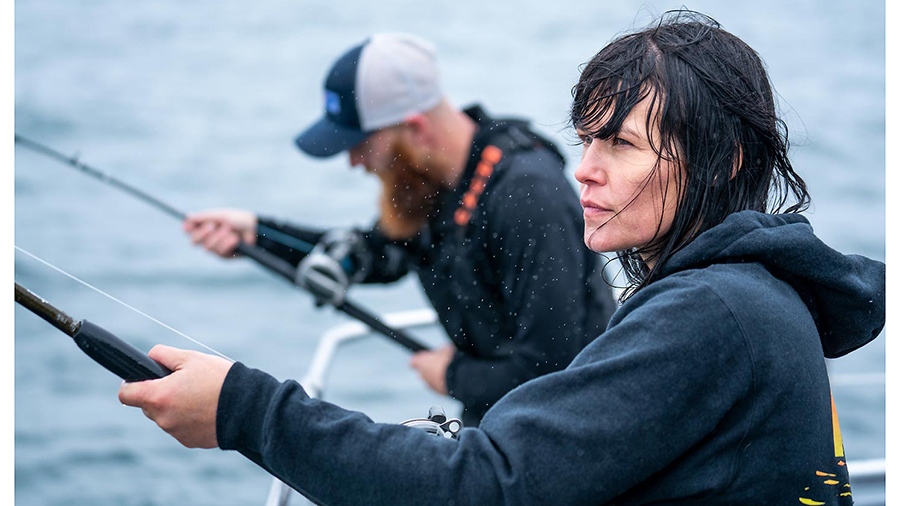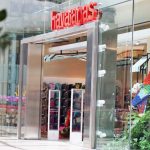Rocky Brands reported fourth-quarter results easily topped expectations due to outperformance by its Retail segment. However, Rocky officials on an analyst call provided a cautious outlook for 2023, expecting sales to decline between 7 and 9 percent, due to low visibility into wholesale orders and uncertain consumer demand.
On a call with analysts, Jason Brooks, CEO, said, “As the macroeconomic uncertainty that we’ve experienced this past year hopefully becomes clearer in 2023, I’m confident that we are well positioned to take advantage of opportunities where we find them and that we will continue to enhance our efficiencies and profitability measures through the areas of our business that are within our control.”
In the fourth quarter ended December 31, sales fell 18.0 percent to $138.9 million but were ahead of Wall Street’s consensus estimate of $130.4 million.
Sales were expected to be down due to tough comparisons. The year-ago period was boosted by a significant shift in orders out of the third quarter into both the fourth quarter and first quarter 2022 as a result of temporary logistic challenges encountered in its distribution center.
Wholesale segment sales decreased 26.6 percent to $98.9 million, Retail segment sales jumped 40.8 percent to $37.3 million, and Contract Manufacturing segment sales, which include contract military sales and private label programs, decreased 66.6 percent to $2.7 million.
Gross margins improved 350 basis points to 40.8 percent due to a tariff refund and a higher mix of Retail segment sales which carry higher gross margins than the Wholesale and Contract Manufacturing segments.
Operating expenses increased to 31.0 percent of sales from 26.6 percent for the same period a year ago. Excluding $1.7 million of acquisition-related amortization and restructuring costs in the latest quarter of 2022 and $1.6 million in acquisition-related amortization and integration expenses in the year-ago quarter, adjusted operating expenses were reduced to $41.4 million from $43.5 million for the same period a year ago. The decrease was driven primarily by a decrease in discretionary spending and improved distribution center efficiencies. As a percent of sales, adjusted operating expenses were 29.8 percent compared with 25.7 percent in the year-ago period.
Operating income in the quarter decreased 25.2 percent to $13.6 million. Net income declined 48.1 percent to $6.5 million, or 89 cents per share while adjusted net income decreased 42.4 percent to $7.9 million, or $1.08, well above the consensus analyst estimate of 63 cents per share. The earnings beat reflected the benefit of strong growth in the higher-margin Retail segment.
For the year, sales grew 19.7 percent to $615.5 million. Wholesale segment sales increased 24.0 percent; Retail segment sales advanced 21.9 percent. Operating income gained 22.4 percent to $44.0 million. Net income for the year remained flat at $20.5 million, or $2.78 per share., while adjusted earnings decreased 26.0 percent to $24.1 million, or $3.27.
On the call, Brooks said Rocky in 2022 saw “sustained consumer demand” across its portfolio of footwear brands in the work, outdoor and western space. He said, “Our functional footwear offered an accessible price point and more needs-based categories have provided a degree of insulation from the inflation-driven pullback in consumer spending that intensified as the year progressed.”
Work Footwear Shows Slight Increase In Fourth Quarter
Elaborating on category performance in the fourth quarter, Brooks said work footwear posted “modest growth” over the quarter despite the more challenging operating environment. Work is Rocky’s largest category, accounting for 42 percent of annual revenues.
Among its brands in the workspace, Georgia had a “solid” fourth quarter. Brooks said, “While some large key account customers slowed orders due to general inventory constraints, new growth with field customers and further penetration into the farm and ranch segment more than made up for the shortfall.”
The Rocky brand’s work business grew strong double-digits, driven by key new customer programs and demand for work product from both e-commerce and traditional retail outlets. Demand for both its Muck and XTRATUF work styles continues to be strong as both “continue to grow into new niches and resonate with customers,” said Brooks.
While demand was positive, mixed results were seen within its rubber work boot segment, largely due to challenges matching up against the strong year-ago outperformance.
Western Footwear Lassos Q4 Revenue Gains
In the Western boot business, “robust” growth was seen in the fourth quarter and retail demand was “very strong as the market continues to trend positively in men’s western category which is a significant portion of our Durango business,” said Brooks.
Durango, the largest piece of the company’s Western business, delivered high single-digit growth as strong inventory fulfillment over the holiday season helped the brand continue to gain market share.
The Rocky Western business was relatively flat against the difficult year-ago comparisons with “solid” results with key partners. Year-ago growth resulted from inventory shortages from key competitors. Said Brooks, “Overall, we spent a large part of the past year taking a significant share in the Western category due to competitor supply chain issues resulting in empty shelf space. While the supply chain dynamic has now normalized, we are pleased to have been able to maintain our market share gains with our wholesale partners and core retail customer set.”
Outdoor Footwear Sees Sharp Q4 Decline
The Outdoor footwear category faced the “most significant headwinds” in the fourth quarter. Early shipments in the third quarter of this year, combined with warehouse delays leading to increased product shipments in the fourth quarter of 2021, significantly impacted the comparability. Additionally, less-than-favorable weather conditions across most of the country this year led to limited fill-ins or new orders for insulated hunting product. Brands in the Outdoor category include Rocky, Muck and Xtratuf.
The decrease in Contract Manufacturing sales was due to the expiration of certain contracts with the U.S. Military.
Retail Segment Boosted By Sizeable B2B And E-Commerce Growth
The Retail segment’s outperformance reflects a 40 percent sales increase at its Lehigh B2B business and a nearly 46 percent increase in its direct-to-consumer business.
Brooks said Lehigh has benefited from realigning its internal sales and service teams that helped support retention efforts and growth over the past year. He also employers continue to use personal protective equipment (PPE), including footwear, orthotics and compression socks, as a way to support employee retention in the current tight labor market. Brooks added, “In fact, we continue to see a significant number of customers grow the individual subsidy for each employee which we believe will drive new opportunities for popular higher-priced products going forward.”
Rocky’s e-commerce business is being helped by enhancements made to websites and digital marketing programs. The e-commerce segment was also less impacted by the year-ago supply chain constraints.
Brooks said, “Though we were tested by inflationary pressure and declining consumer segment throughout 2022, overall, I’m very pleased with the resiliency of the demand we’ve seen for our portfolio of brands and our ability to meet that demand with excellent supply chain management.”
Inventory at year-end was $235.4 million, relatively flat when compared to $232.5 million a year ago. Compared with June 30, 2022, inventories were down 18.2 percent, ahead of plan. Thomas Robertson, EVP and CFO, said on the call, “We feel very good about the quality of our inventory. And given the functional nature of our product, we see little risk for above-average markdowns.”
Outlook
For the current year, sales are expected to range from $560 million to $570 million, down between 7 percent to 9 percent compared to net sales of $615.5 million in 2022. Robertson said, “With the outlook for the economy uncertain and consumer discretionary spending still under pressure from inflation, we are approaching the upcoming year cautiously from a demand standpoint.”
The outlook includes no revenue from its Contract Manufacturing segment in this year’s forecast which compares to $15 million reported in 2022. A high-single-digit or low-double-digit gain is expected in the Retail segment and a mid-single-digit decline is expected in the Wholesale segment.
Rocky expects the year to return to resembling pre-pandemic patterns with more volume in the second half of the year versus the first half. As a result, sales are expected to be down year-over-year in the first half against tougher comparisons before returning to growth in the second half.
Gross margins are projected to be approximately 40 percent for the year compared to adjusted gross margins of 36.6 percent in 2022, benefiting from price increases taken last fall, combined with reduced logistics and inbound freight costs as well as a more favorable segment mix. Operating expenses are projected to be fairly consistent with 2022’s adjusted levels.
Inventories are expected to be down approximately $45 million by the end of 2022. Robertson said, “This will be a meaningful source of cash generation that will utilize to repay borrowings on our credit facility.”
Photo courtesy Rocky Brands/Xtratuf
















